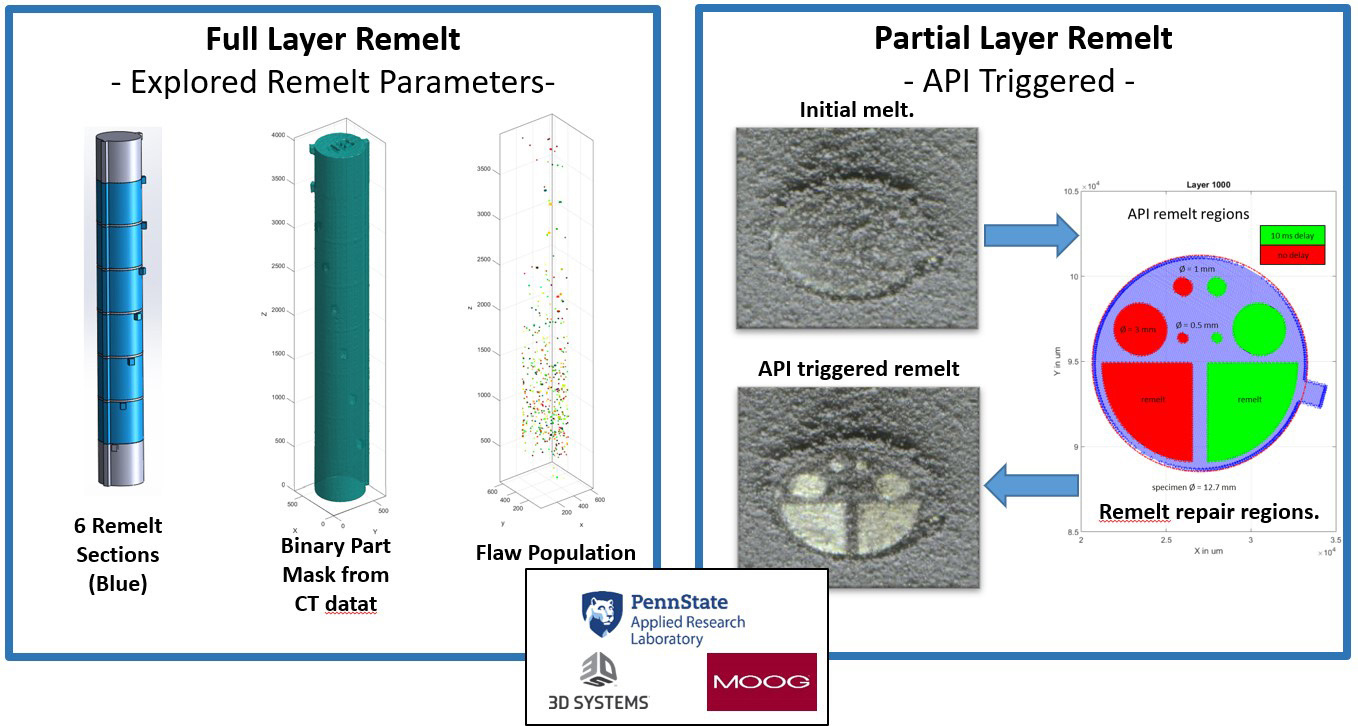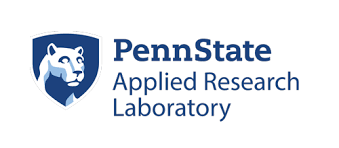


Full-layer remelt strategies were used to optimize remelt parameters, and API-triggered remelt of specific areas was demonstrated.
Problem
Flaws in laser-based powder bed fusion (LPBF) additive manufacturing (AM) components detrimentally affect the part quality and thus mechanical performance, thereby limiting applications of the technology in industry. Though OEMs optimize processing conditions to achieve the best possible quality, stochastic flaws persist in AM material. These internal flaws negatively impact fatigue properties, limit the ability to define design limits, hamper qualification efforts, and consequently prevent widespread use of AM in many critical applications.
Objective
The objective of this effort was to develop and demonstrate key processes necessary to realize interlayer repair in a LPBF system based on automated flaw detection demonstrated in prior efforts. Specifically, the project sought to optimize process parameters to repair flaws by remelting between layers and documenting impact on remaining flaws via post-build computed tomography (CT) scans. Another objective was to demonstrate the ability to realize interlayer repair procedures in a production LPBF system using the software application program interface (API).
Technical Approach
The Applied Research Laboratory at the Pennsylvania State University (ARL/PSU) led the program which included Moog, Inc. (Moog) and 3D Systems (3DS). Experiments were designed to optimize process parameters necessary to achieve successful interlayer remelt repair. One build designed by ARL/PSU exacerbated formation of stochastic flaws, e.g. parts located near the cross-flow exit. A series of remelt process conditions were applied to various regions of the part (performed by 3DS). Post-build CT scans were used to assess the effectiveness of each remelt condition by ARL/PSU.
Key capabilities necessary to realize an integrated interlayer remelt repair of specified regions were demonstrated. An API designed by 3DS was employed to remelt specified regions prior to recoating the next layer. An application developed by ARL/PSU was used to specify the remelt region and process parameters, with process monitoring data collected before and after the repair operation to confirm operation.
Finally, the ability to realize interlayer repair was assessed with an interrupted build strategy. A build created by Moog with process parameters known to generate defects was removed partway through the build and CT scanned. Interlayer remelt parameters were applied to the top surface and post-repair CT scans were compared to the original scans to assess effectiveness.
Accomplishments
Flaw mitigation strategies based on interlayer remelt repair were developed, demonstrated, and analyzed for effectiveness. Initial strategies were derived from first principles such as linear heat input and normalized enthalpy. Process parameters such as scan power, speed, hatch spacing, and hatch angle were varied to evaluate the derived strategies. All specimens were analyzed through X-Ray Computed Tomography (CT) scans and Automated Defect Recognition (ADR) software to identify porosity and determine the resultant flaw population. The most promising strategies yielded low flaw populations and porosity as compared to nominal, single-melt processing.
To facilitate real-time flaw mitigation for LPBF, a software module was developed for the 3D Systems ProX 320 machine. An application programming interface (API) was modified to allow for remelt command lists to be injected into the control software. In the future, those remelt commands could be generated in real-time based on software analysis of process monitoring data.
Flaw mitigation using an interrupted build process was also tested and the resulting specimens were analyzed during and at the end of the build process. Analysis methods were performed by Moog and included Xray CT, a convolutional neural network (CNN) based quality assessment tool, and a surface quality assessment tool. Assessment methods were compared and clearly showed reductions in porosity and mitigation of specific flaws with the use of the interrupted build strategy.
Through the completion of all three tasks, the project showed the potential of creating a feedback loop that recognizes real-time flaws and enables the integration of immediate flaw mitigation processes into the LPBF process to pave the way toward higher-quality builds.
Project Participants
Project Principal

Other Project Participants
- Moog, Inc.
- 3D Systems
Public Participants
- U.S. Department of Defense
